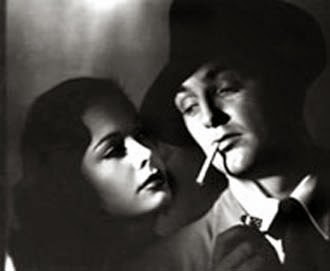 Closing out the spectacular season here at Signature Theatre is the world premiere of Ed Dixon's mile a minute film noir spectacular, Cloak and Dagger. We are very excited to bring this hilarious new musical to the MAX stage this coming June. With a cast of four actors playing over 20 roles, this stellar group of performers will have you rolling in the aisles as they jump from character to character in this madcap send-up of noir and all it holds sacred.
Closing out the spectacular season here at Signature Theatre is the world premiere of Ed Dixon's mile a minute film noir spectacular, Cloak and Dagger. We are very excited to bring this hilarious new musical to the MAX stage this coming June. With a cast of four actors playing over 20 roles, this stellar group of performers will have you rolling in the aisles as they jump from character to character in this madcap send-up of noir and all it holds sacred.For those of you that might be unfamiliar with the world of noir, have no fear, the Signature Theatre Educaton Department is here for you with all the information you thought you didn't need to know.(But now realize you are happy you do know.) So where to start with such a topic? Why not the beginning?
FILM NOIR
 |
| Two silhouetted figures in The Big Combo |
During
and immediately following World War II, movie audiences responded to this
fresh, vivid, adult-oriented type of film — as did many writers, directors,
cameramen and actors eager to bring a more mature world view to Hollywood product. Fueled by the financial and artistic
success of Billy Wilder’s adaptation of James M. Cain’s novella Double Indemnity (1944), the studios
began cranking out films with particularly dark and venomous views of
existence.
 |
| Barbara Stanwyck and Fred MacMurray in Double Indemnity |
So, we now have a rough idea of what noir might feel like but what does noir look like? How does one look at a film and identify it as noir instantly? What follows is a small and general sampling of elements and archetypes found in noir.
- Flashback / Flash Forward: A scene set in a time earlier / later than the main story. The protagonist often experiences several of these throughout the story.
 |
| An alluring femme fatale. |
- Femme Fatale: An attractive and seductive woman. Normally one who will ultimately bring disaster to whomever becomes involved with her.
- Detective / Anti-Hero: The noir character who often lacks conventional heroic attributes. Usually sardonic, sarcastic, hardboiled and just generally grumpy.
- Narration: The act of describing what happens. The hero in a noir often does a large amount of narration both internal and external.
- Black and White: Noir is often in a world of black and white, literally. In terms of colors and characters there are only the extremes of black and white, with few shades of gray in between.
- Cigarettes: Whether it is the radiant femme fatale or the brooding down on his luck detective, everyone smokes at least several packs a day..
 |
| Jan Greer and Robert Mitchum in Out of the Past |
- Red Herring: An instance that is used to distract. In noir it could be a character or clue that makes the viewers and hero suspect something else.
- Sexual Tension: When two individuals interact and one or both feel sexual desire, but it is postponed or never happens. Often happens between the hero and femme fatale.
- No Happy Ending: Not everyone can have a perfect life and ending in noir. Some might get what they are after, but in the end largely no one is much happier.
- Crime: Murders, heists, and cons are often major focal points of noir. These events might start the action of the story or may happen throughout the course of events.
There is clearly a lot of history and material built up in the world of noir. Stop by Signature Theatre and check out Cloak and Dagger in the MAX Theatre, which runs from June 12th - July 6th. Tickets can be purchased at our box office at 703 820 9771. We hope to see you there.







0 comments:
Post a Comment